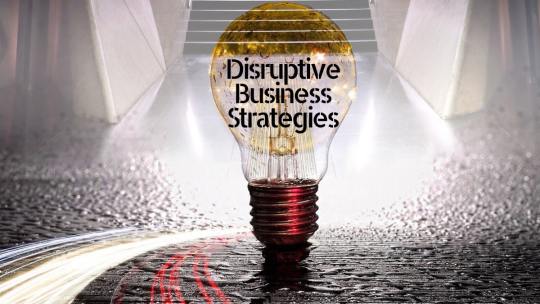#agile strategy
Explore tagged Tumblr posts
Text
youtube
How to Memorize Everything You Read
Are you tired of reading books and forgetting everything you just learned? Do you struggle to retain information from your reading materials? If so, this video is for you. In this video, we'll share tips and techniques to help you memorize everything you read. From active reading strategies to memory retention exercises, we'll cover everything you need to know to improve your memory and recall. First, we'll discuss the importance of active reading and how to engage with the material you're reading. We'll share tips for highlighting, taking notes, and summarizing the material to help you better understand and retain the information. Next, we'll dive into memory retention exercises that you can use to reinforce what you've learned. We'll discuss techniques like repetition, visualization, and association to help you cement the information in your brain. Finally, we'll share some tips for practicing and testing your memory. We'll talk about ways to review the material you've learned, as well as how to quiz yourself to make sure you're retaining the information. By the end of this video, you'll have a comprehensive understanding of how to memorize everything you read. You'll be equipped with the knowledge and tools to improve your memory retention and become a more effective reader. So, grab a notebook and a pen, and let's get started on the journey to better memory retention and improved learning. Don't forget to like and subscribe for more videos like this!
#success#study motivation#bossmindset#startup tips#business planning#niche targeting#team building#agile strategy#customer-centric#approach#entrepreneurship#small business advice#startup success#growth strategy#winningmindset#successmindset#mindsetdevelopment#personaldevelopment#goalsetting#growthmindset#selfdiscipline#positivity#resilience#embracingfailure#motivation#productivity#successhabits#mindsetshift#mindsetmatters#thebossmindset
3 notes
·
View notes
Text
Efficient capital allocation is the linchpin of sustained business success. Regardless of industry, business leaders grapple with the challenge of judiciously deploying resources to maximize profits and foster growth. Here are five fundamental strategies to guide business leaders in mastering the art of capital allocation.
0 notes
Text
How to manage change and adapt strategy in a dynamic environment
Change Management : A Framework for Organizational Success When a crisis hits, we have a choice: we can either react with fear and panic, or we can respond with courage and purpose. As leaders, we have the responsibility to inspire our teams to embrace the challenge and see the opportunity for growth and innovation. Change is not something we should resist, but something we should welcome as a…

View On WordPress
#Agile#Agile Strategy#Agility#Change#Change Management#Dynamic Environment#Global Performance#Industrial performance#Lean management#Management#Performance#Process#Process optimization#Strategy#Team#Team cohesion#Team performance#Team spirit#Trust#Volatile World#Waste Elimination#Waste Hunting
0 notes
Note
And thank YOU for sharing your amazing art with us! Also speaking of Hans! Does Laura also have the ability to transform into a big like spooky spirit wolf thingy like him? Like what he did during the fight with Seras
She can! Though she uses is more scarcely. I also headcanon that werewolves can transform two ways: ghostly and physically.
Ghostly is how Hans does it against Seras; big spooky spirit stuff. It takes a lot of practice but also saves the user from pain. Physically is how Laura does it. Bones and muscles and organs expand; it takes no experience but is also quite painful.
The spirit form can be used to dodge and block attacks due to its incorporeality; however, Laura just tanks any attacks made at her 99% of the time. I wanted to emphasize the difference between her and Hans. Hans uses modern/"human" techniques of fighting and his powers to the most effective way, while Laura is extremely beastly and animalistic; her fighting style isn't martial arts, it's tearing stuff up and tanking anything thrown at her because she's used to the sting.
#laura chastel#hellsing oc#fanlore#werewolf lore#ask response#it's hard to create ur own lore bc we're not given ANY#but it's also fun#I put a lot of thought into werewolf abilities in the Hellsing verse#powerscaling wise; Laura's defense is vastly superior to Hans'#while he has more battle strategy and experience due to being a soldier#I'd say he's quite faster and more agile than her. however she's bigger and stronger
21 notes
·
View notes
Text






Copycat my beloved
#Treecko#skitty#dialga#pmd#pokemon mystery dungeon#pokemon doodles#original art#Agility + copycat + reviver seeds#A winning strategy#God this has been sitting in my drafts forever I forgot about it aksjakjdkskdjan
227 notes
·
View notes
Text
The Zachman Framework: The Granddaddy of Modern Enterprise Architecture
🏛️ From 1987 to Today: How One Framework Shaped the Entire Field of Enterprise Architecture Ever wonder why today's enterprise architecture frameworks all feel somehow... familiar? I've just published an article on the history of the Zachman Framework!
Picture this: It’s 1987. The first Zelda game just hit shelves, The Simpsons made their TV debut, and somewhere in the tech world, a revolutionary idea was taking shape that would influence enterprise architecture for decades to come. Enter the Zachman Framework. The Family Tree of Enterprise Architecture If enterprise architecture frameworks were a family, the Zachman Framework would be the…
#agile#architecture#Enterprise Architecture#IT Strategy#solution-architecture#technology#TOGAF#Zachman
2 notes
·
View notes
Text
The Indispensable Need for a Solid Strategy in an Agile Environment
I have just written a blog post for Teamprove GmbH about the importance of having a solid strategy in an Agile environment. You can find the blog post following this link:https://www.teamprove.de/blog/the-indispensable-need-for-a-solid-strategy-in-an-agile-environment/

View On WordPress
#Agile#Business#business consultant#Business strategy#Raffaello Palandri#Strategy#Strategy Consultant#Teamprove
11 notes
·
View notes
Text
Strategic Project Management
Many discussions about project management overlook the significance of the crucial early choices that shape the project execution approach. Decisions such as employing Agile or Waterfall methodologies, or choosing between prefabrication and on-site assembly, may not alter the expected project output, but they can greatly affect the delivery process and the project’s likely success. There’s no…

View On WordPress
#Agile#Execution strategy#On-site assembly#Organizational strategy#Performance criteria#PESTEL#planning#Policy creation#Portfolio management#Prefabrication#Program management#Project delivery#project management#stakeholder engagement#Success criteria#Waterfall
5 notes
·
View notes
Text
Disruptive Business Strategies: Innovate, Compete, and Succeed
Disruptive business strategies are innovative approaches that challenge the status quo of the industry and introduce new products, services, or business models that change the way things are done. Here are a few examples of disruptive business strategies that have expanded businesses worldwide: Uber: Uber is a ride-sharing service that disrupted the traditional taxi industry. Instead of owning a…

View On WordPress
#agile development#business competition#business leadership#business strategy#business success#business tips#competitive advantage#competitive edge#creative culture#emerging trends#grow business#industry norms#innovation#market disruption#market opportunity#marketing#technology#user experience
2 notes
·
View notes
Text
Want to stay ahead in the evolving job market? Skills demand forecasting is your edge.
🔍 Use AI, trend analysis & labor market data to predict future roles and hire smarter. Insights here: https://bit.ly/431QK3O

#HR#HiringTrends#WorkforcePlanning#TalentStrategy#Job#talent strategy#workforce#agility#hrtech#talentintelligence#futureofwork#future of work#bigdata
0 notes
Text
instagram
The muay thai boxing fighter 🥊You can find every sing what you look for in the Muay Thai sport. 🥋 We a waiting for you wid love et web shop. ⏬️Click here and look at aur offer.⏬ linktr.ee/thaiboxing
#boxing#kickboxing#martialarts#combat#fight#athlete#competition#sport#fitness#strength#discipline#determination#strategy#technique#agility
0 notes
Text
Too Much Change, Too Fast: A Smarter Way Forward
Imagine a workforce grappling with not just one, but multiple significant transformations—new systems, new structures, and new expectations—all at once. In today’s fast-paced business landscape, that scenario is no longer an exception, it’s the norm. But when change accumulates faster than people can absorb it, we reach a tipping point called change saturation—a state where productivity declines,…

View On WordPress
#AgileTransformation#ChangeChampions#ChangeManagement#DigitalStrategy#EmployeeEngagement#FutureOfWork#LeadershipDevelopment#OrganizationalDevelopment#TransformationLeadership#adoption strategies#agile roles#agile transformation#change champions#Change fatigue#Change leadership#change management tools#change saturation#Communication Strategy#culture of change#Digital Transformation#employee enablement#employee engagement#enterprise transformation#leadership coaching#leading change#manager coaching guides#organizational change management#peer learning#pulse surveys#stakeholder communication
0 notes
Text
Amazon CEO Andy Jassy on Agility, AI Strategy, and the Changing Role of Managers
ALISON BEARD: I’m Alison Beard, executive Editor at Harvard Business Review. ADI IGNATIUS: And I’m Adi Ignatius, HBR Editor-at-Large. ALISON BEARD: And this is the HBR IdeaCast where we give you insights and inspiration to make you a better leader. Now, Adi, I have been hosting the show for nearly seven years now, and you’ve popped in on occasion, but let me officially welcome you as a new…
0 notes
Text
How to become a learning company with continuous improvement
A learning company aligns its strategy, culture, and processes to develop the skills of all individuals and leverage their collective intelligence.
Kaizen : A mindset for learning and adapting in a changing world Lean management in times of crisis means learning to adapt constantly, learning to learn, integrating organizational learning as a vector of performance. Isn’t the goal of a Lean approach then to design an autonomous and self-learning system for the quest for performance? By changing the behavior and culture of individuals towards…

View On WordPress
#Agile#Agile Strategy#Agility#Continuous Improvement#Continuous Learning#Gemba#Kaizen#Lead and Learn#Leadership#Lean#Lean Governance#Lean management#Lean manufacturing#Lean Strategy#Learning#Learning Company#Management#self-learning system#Strategy#Waste Hunting
0 notes
Text
AI’s Real Value Is Built on Data and People – Not Just Technology
New Post has been published on https://thedigitalinsider.com/ais-real-value-is-built-on-data-and-people-not-just-technology/
AI’s Real Value Is Built on Data and People – Not Just Technology


The promise of AI expands daily – from driving individual productivity gains to enabling organizations to uncover powerful new business insights through data. While the potential of AI appears limitless and its impact easy to imagine, the journey to a truly AI-powered ecosystem is both complex and challenging. This journey doesn’t begin and end with implementing, adopting or even consistently using AI – it ends there. Realizing the full value of an AI solution ultimately depends on the quality of the data and the people who implement, manage and apply it to drive meaningful results.
Data: The Cornerstone of AI Success
Data, the organizational constant. Whether it’s a Mom-and-Pop convenience store or an enterprise organization, every business runs on data (financial records, inventory, security footage etc.) The management, accessibility and governance of this data is the cornerstone to realizing AI’s full potential within an organization. Gartner recently noted that 63% of organizations either lack confidence or are unsure about if their existing data practice or management structure is sufficient for successful adoption of AI. Enabling an organization to unlock the full potential of AI requires a well thought out Data Practice. From collection, storage, synthesis, analysis, security, privacy, governance, and access control – a framework and methodology must be in place to leverage AI properly. Additionally, it is essential to mitigate the risks and unintended consequences. Bottom line, data is the cornerstone of analytics and the fuel for your AI.
The access your AI solution has to your data determines its potential to deliver – so much so, we’re seeing the emergence of new functions tailored specifically to it, the Chief Data Officer (CDO). Simply put, if an AI solution is introduced to an environment with “free-floating” data accessible to anyone – it will be error-prone, biased, non-compliant, and very likely to expose sensitive and private information. Conversely, when the data environment is rich, structured, accurate, within a framework and methodology for how the organization uses its data – AI can return immediate benefits and save numerous hours on modeling, forecasting, and propensity development. Built around the data cornerstone are access rights and governance policies for data, which present its own concern – the human element.
People: The Underrated Factor in AI Adoption
IDC recently shared that 45% of CEOs and over 66% of CIOs surveyed conveyed a hesitancy around technology vendors not completely understanding the downside risk potential of AI. These leaders are justified in their caution. Arguably, the consequences of age-old IT risks remain similar with governed AI (i.e., downtime, operational seizures, costly cyber-insurance premiums, compliance fines, customer experience, data-breaches, ransomware, and more.) and are amplified by the integration of AI into IT. The concern comes from the lack of understanding around the root-causes for those consequences or for those that are not aware, the angst that comes with associate AI enablement serving as the catalyst for those consequences.
The pressing question is, “Should I invest in this costly IT tool that can vastly improve my business’s performance at every functional level at the risk of IT implosion due to lack of employee readiness and enablement?” Dramatic? Absolutely – business risk always is, and we already know the answer to that question. With more complex technologies and elevated operational potential, so too must the effort to enable teams to use these tools legally, properly, efficiently, and effectively.
The Vendor Challenge
The lack of confidence in technology vendors’ understanding goes beyond subject matter expertise and reflects a deeper issue: the inability to clearly articulate the specific risks that an organization can and will face with improper implementations and unrealistic expectations.
The relationship between an organization and technology vendors is much like that of a patient and a healthcare practitioner. The patient consults a healthcare practitioner with symptoms seeking a diagnosis and hoping for a simple and cost-effective remedy. In preventative situations, the healthcare practitioner will work with the patient on dietary recommendations, lifestyle choices, and specialized treatment to achieve specified health goals. Similarly, there’s an expectation that organizations will receive prescriptive solutions from technology vendors to solve or plan for technology implementations. However, when organizations are unable to provide prescriptive risks specific to given IT environments, it exacerbates the uncertainty of AI implementation.
Even when IT vendors effectively communicate the risks and potential impacts of AI, many organizations are deterred by the true total cost of ownership (TCO) involved in laying the necessary foundation. There’s a growing awareness that successful AI implementation must begin within the existing environment – and only when that environment is modernized can organizations truly unlock the value of AI integration. It’s similar to assuming that anyone can jump into the cockpit of an F1 supercar and instantly win races. Any reasonable person knows that success in racing is the result of both a skilled driver and a high-performance machine. Likewise, the benefits of AI can only be realized when an organization is properly prepared, trained, and equipped to adopt and implement it.
Case in Point: Microsoft 365 Copilot
Microsoft 365 Copilot is a great example of an existing AI solution whose potential impact and value have often been misunderstood or diluted due to customers’ misaligned expectations – in how AI should be implemented and what they believe it should do, rather than understanding what it can do. Today, more than 70% of Fortune 500 companies are already leveraging Microsoft 365 Copilot. However, the widespread fear that AI will replace jobs is largely a misconception when it comes to most real-world AI applications. While job displacement has occurred in some areas – such as fully automated “dark warehouses” – it’s important to distinguish between AI as a whole and its use in robotics. The latter has had a more direct impact on job replacement.
In the context of Modern Work, AI’s primary value lies in enhancing performance and amplifying expertise – not replacing it. By saving time and increasing functional output, AI enables more agile go-to-market strategies and faster value delivery. However, these benefits rely on critical enablers:
A mature Data Practice
Strong Access Management and Governance
Robust Security measures to mitigate risks
People enablement around responsible AI use and best practices
Here are a few examples of AI-driven functional improvements across business areas:
Sales Leaders can generate propensity models using customer lifecycle data to drive cross-sell and upsell strategies, improving customer retention and value.
Corporate Strategy & FP&A Teams gain deeper insights thanks to time saved analyzing business units, enabling better alignment with corporate goals.
Accounts Receivable Teams can manage payment cycles more efficiently with faster access to actionable data, improving outreach and customer engagement.
Marketing Leaders can build more effective, sales-aligned go-to-market strategies by leveraging AI insights on sales performance and opportunities.
Operations Teams can reduce time spent reconciling Finance and Sales data, minimizing chaos during end-of-quarter or end-of-year processes.
Customer Success & Support Teams can cut down response and resolution times by automating workflows and simplifying key steps.
These examples only scratch the surface of AI’s potential to drive functional transformation and productivity gains. Yet, realizing these benefits requires the right foundation – systems that allow AI to integrate, synthesize, analyze, and ultimately deliver on its promise.
Final Thought: No Plug-and-Play for AI
Implementing AI to unlock its full potential isn’t as simple as installing a program or application. It’s the integration of an interconnected web of autonomous functions that permeate your entire IT stack – delivering insights and operational efficiencies that would otherwise require significant manual effort, time and resources.
Realizing the value of an AI solution is grounded in building a data practice, maintaining a robust access and governance framework, and securing the ecosystem – a topic that requires its own deep dive.
The ability for technology vendors to a valued partner will be dependent on both marketing and enablement, focused on debunking myths and calibrating expectations on what harnessing the potential of AI truly means.
#access control#access management#Accessibility#Accounts#adoption#agile#ai#AI adoption#AI implementation strategies#AI integration#AI-powered#amp#Analysis#Analytics#applications#autonomous#awareness#Building#Business#catalyst#CDO#chaos#chief data officer#cios#cockpit#Companies#compliance#customer engagement#customer experience#customer retention
0 notes
Text
Sun Tzu’s The Art of War has been studied for centuries as a guide to military strategy, leadership, and tactical superiority. However, its wisdom extends beyond the battlefield and finds relevance in business, leadership, and project management. Many of the principles outlined in this ancient text offer valuable insights into navigating challenges, leading teams, and achieving success in today’s fast-paced project environments.
In this blog, we will explore how the principles of The Art of War can be applied to project management, helping leaders and teams execute their projects with precision, efficiency, and strategic foresight.
#ProjectManagement#Leadership#Strategy#TheArtOfWar#SunTzu#BusinessSuccess#Agile#RiskManagement#Innovation#Teamwork#Efficiency#ProblemSolving#TimeManagement#ConflictResolution#StakeholderEngagement
0 notes